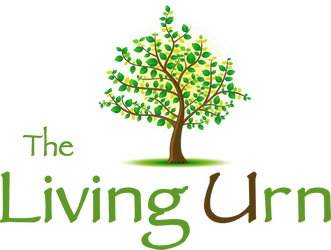
The Special Relationship Between People and Trees
People and trees have far more things in common than many of us realize. Below we share some interesting and wonderful things people and trees have in common and why the relationship between people and trees is so special and important. This includes the fact that both humans and trees are mostly water, we share similar physical characteristics, and each one of us are completely unique. In addition, humans and trees are interdependent - we breathe in oxygen and breathe out carbon dioxide, while trees take in carbon dioxide and release oxygen. This extraordinary connection between people and trees is evolving even further as more and more people are electing to use a tree urn after they pass. With this, families can grow a beautiful living memorial tree from a Living Urn containing cremated ashes to honor a loved one and give back.
What People and Trees Have in Common

There are many similarities between people and trees. Below we’ve highlighted a few of them:
Physical Characteristics
Both, people and trees, stand upright with a crown on top and limbs stemming from a central trunk. In addition, the tubular branching pattern of our lungs resembles the root system of many trees.
Uniqueness and Beauty
Every person and every tree is unique and no two are exactly alike. With trees colors can vary, branches can grow and bend at different angles, and buds and flowers occur at different places. Similar to people, trees have different growth rates, with variation in height and volume. Some grow tall while others are short. Some remain skinny and others grow wide. The uniqueness and diversity evident in both trees and people helps to make the world a more interesting and beautiful place!
Reliance on Water
Both people and trees are comprised of mostly water and rely on this resource to survive. Most trees are made up of more than 50% water. Similarly, an adult person is made up of approximately 60% water. Without water, life as we now it would not be possible for people, trees, and everything else.
Reliance on Others
Did you know that there are just as many microbes on the human body as actual human cells? Even though these microbes are not part of the body, they perform functions important to human life. Similar to people, trees also rely on other living organisms for survival and reproduction. For example, many trees rely on certain fungi to stick to their roots and to enable them to sufficiently extract water from the soil. In addition, many trees and shrubs (including the cherry tree, serviceberry, plum, among others) rely on pollinating insects to exchange pollen from their flowering blooms to regenerate.
Live in Communities
According to an article in the Smithsonian in March 2018, researchers have compiled evidence that trees of the same species are actually communal organisms (like humans) and can even form alliances with trees of other species. The researchers also found that forest trees have evolved to live in interdependent and cooperative relationships that are sustained by communication and a collective intelligence similar to an insect colony or a city.
The Symbiotic Relationship Between People and Trees
Trees and people have an interdependent relationship. One example is we breathe in oxygen and breathe out carbon dioxide. Trees, on the other hand, take in carbon dioxide and release oxygen into the atmosphere. The role trees play in the ecosystem is vital for human and other life on earth. In addition, trees support us by providing shade and shelter, preventing soil erosion, serving as wind breaks, cleaning the groundwater, and by providing food.
Trees and Spirituality
The special connection between people and trees can be seen in cultures all over the world, even going back to ancient times. As we admire trees today and understand the importance of their role for life on earth, so did early man. This is evident in the symbolism of trees recorded throughout history. In addition to providing needs such as food, shelter, healing, and protection, trees have also played an important part in the spirituality of various groups of people and religions.
The Tree of Life or trees used as a symbol can be found throughout various religious texts. This includes the Tree of Knowledge and Tree of Life in the Bible, the Tree of Immortality in the Quran, the Assyrian Tree of Life in Ancient Mesopotamia, and the Bo or Bodhi Tree in Buddhism, among others. In addition, ancient people in Greece, Persia and other regions commonly used the world tree motif symbol, which shows the roots of the tree wrapped around Earth and its branches in the heavens. This symbol represents a tree which supports the heavens and connecting the heavens to the terrestrial world, and, with its roots, the underworld.’
Trees and a Sense of Place
Trees connect us to where we live. Our eyes are often drawn to them when we go outdoors and they can serve as landmarks and help us find our way. Many people consciously or subconsciously remember a place they visited by what trees were present and can have a feeling or memory come to mind when they see a tree. For example, people who are from or lived in coastal areas of California, Florida, or Hawaii can remember memorable times in their life and at those moments palm trees being present. If you’re from Ohio or Pennsylvania, many will remember a childhood filled with maple trees and the beautiful fall colors they displayed. Other people can remember the scent of orange or cherry blossoms from a nearby grove growing up , or the majestic pine and spruce trees from vacations in the mountains.
The Future: Mankind and Trees
According to a recent study by Yale University, there are over 3 trillion trees on earth. However, these numbers are declining by over 15 billion per year and we’ve lost over 45 percent of the trees on earth since mankind began cutting them down. On the other hand, there are over 7.6 billion people on earth and this number is growing at approximately 80 million per year.
The good news is many people are aware of this issue and are working hard to preserve and protect ecosystems and trees for future generations. Organizations like the Arbor Day Foundation and others are focused on replanting our precious forests that have suffered from fires, insect infestation and human destruction.
In addition, the concept of The Living Urn is growing in popularity and contributes to these preservation efforts in a truly personal way. The idea of a tree burial connects with so many people because of the special relationship that exists between people and trees. What better way to honor a loved one and give back to the ones left behind than to plant a Living Urn biotree urn and create a tree memorial. In addition, for every Living Urn planted, the company donates to plant a second tree in an area in the U.S. in need of reforestation (doubling the impact!).


